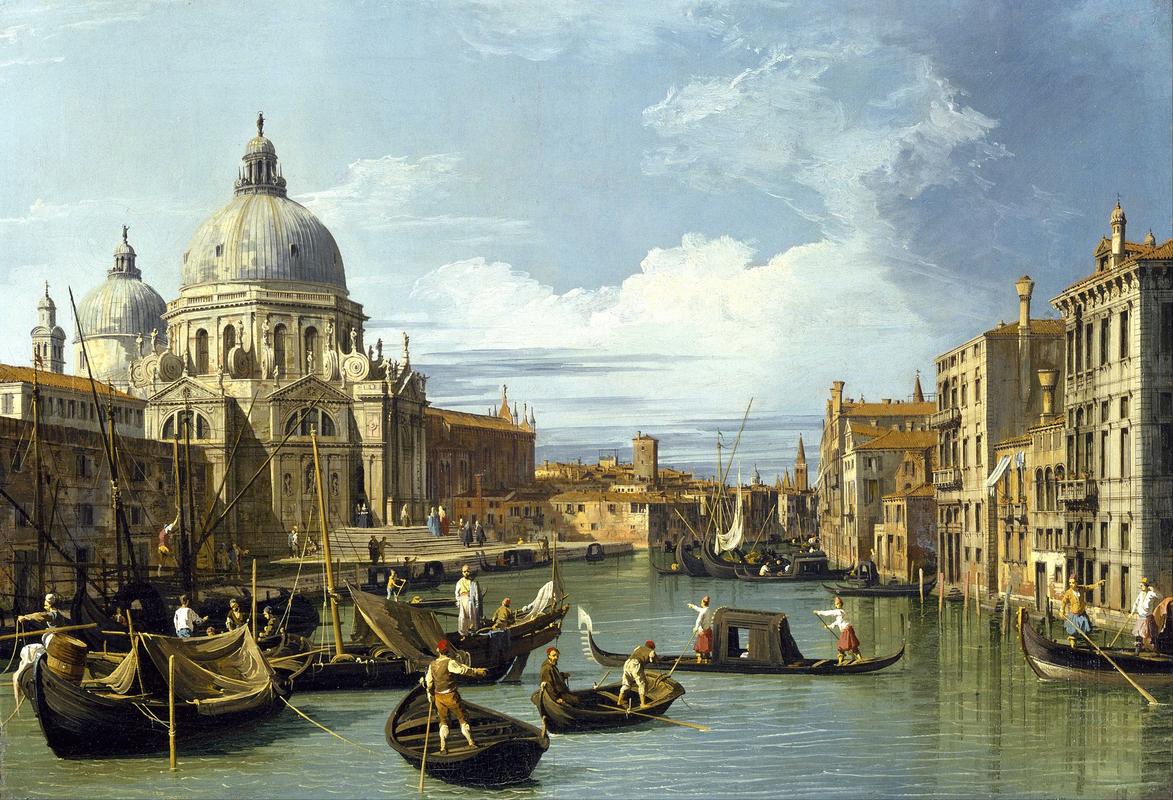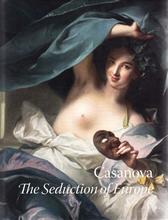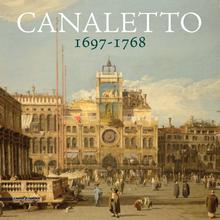More about The Entrance to the Grand Canal, Venice
- All
- Info
- Shop

Contributor
According to the Museum of Fine Arts, Houston, Canaletto's Entrance to the Grand Canal, Venice was acquired by the Howard family, which married into the lineal descent of the Anglo-Irish Earls of Wicklow, who held the painting for two centuries.
In 1955, Ralph Francis Howard, the 7th Earl of Wicklow, who represented the Irish Free State in Parliament, sold it to Edward Spielman, who sold it to M. Knoedler & Co., who sold it to the philanthropist and Texaco oil heiress Sarah "Sadie" Campbell Blaffer, who donated it to the museum. She also donated works by Cézanne and Renoir to the Museum of Fine Arts, Houston. Blaffer's life's work was to make great artworks available to people who were otherwise unable to see such works for reasons of geography and/or economics.
At the time of the creation of The Entrance to the Grand Canal, Venice, the Venetian Republic's "physical beauty and captivating charm were undiminished–perhaps even enhanced by decay–and the city rose to the occasion, putting on a magnificent show for its affluent visitors. The Grand Canal was an almost constant theater for festas and regattas during the carnival season–and that now lasted half the year." With the Venetian language in danger, soon to be replaced by Florentine, which we call "Italian," the subjects of this painting are entertaining tourists from Western Europe with the vain hope of keeping alive the sovereignty of their nation. While Canaletto was famous for his etchings, this particular scene, the Grand Canal, is absent from them, possibly due to its grandeur and color, untranslatable into another form.
An ancient Hebrew tradition teaches that your name is your destiny, and it would seem that Canaletto, "Little Canal," who inherited the surname Canal from his artist father, was destined to make this beautiful representation of the Grand Canal of Venice, a metonym for the Republic in its twilight years. In the days before the earliest daguerreotype photographs, you might think that a tourist would look at this painting of the canal as we would look at a photograph today. Writers claim that Canaletto had the "eye of a scientist," even using infrared analysis to disprove the theory that he used camera obscura for his compositions. But the painting contains a joyful element of imagination, the fabulation of small details and the spirited movement of its water, wind, and people, that could only come from the unique perspective of Canaletto, who picked up the emotional vibration of the Republic of Venice more faithfully and lovingly than any camera.
Sources
- "Canaletto had Scientist's Eye." Science 294, Iss. 5542 (Oct. 19, 2001): 511.
- Casaliggi, Carmen, and Paul March-Russell. Ruskin in Perspective: Contemporary Essays. Cambridge: Cambridge Scholars, 2007.
- "Current History and Forum Volume 17," The New York Times Current History. New York: C-H Publishing Corporation, 1923.
- Ferber, Alona. "Kabbala Says: Ward Off the Evil Eye - Change Your Name." Haaretz, Apr. 19, 2014, https://www.haaretz.com/jewish/.premium-unlucky-change-your-name-1.5244…
- Furness, Hannah. "Royal Collection uses infrared to prove Canaletto did not trace his drawings." The Daily Telegraph, 14 April 2017.
- Hixon, Nancy S. "Blaffer, Sarah Campbell." Handbook of Texas Online, Jun 12, 2010, http://www.tshaonline.org/handbook/online/articles/fbl51.
- di Robilant, Andrea. A Venetian Affair: A True Tale of Forbidden Love in the 18th Century. New York: Knopf Doubleday Publishing Group, 2007.
- Weinhardt, Jr., Carl J. "Canaletto: Master Etcher." The Metropolitan Museum of Art Bulletin XVII, no. 3 (Nov. 1958): 77-87.
Featured Content
Here is what Wikipedia says about The Entrance to the Grand Canal, Venice
The Entrance to the Grand Canal, Venice, is a c. 1730 oil painting on canvas by the Venetian painter Canaletto. It is a Rococo landscape painting measuring 49.6 by 73.6 centimeters (19.5 in × 29.0 in) currently held as part of the Robert Lee Blaffer Memorial Collection in the Audrey Jones Beck Building at the Museum of Fine Arts, Houston, in Houston, Texas. It was a gift from Sarah Campbell Blaffer.
The large church at the left of the painting is the Basilica of Santa Maria della Salute. A variant of the painting with a larger church tower and an additional building is used as the Venetian screen in the 2001 video game Merchant Prince II.
Check out the full Wikipedia article about The Entrance to the Grand Canal, Venice














